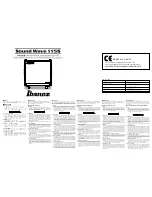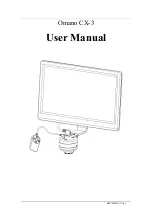
Features and characteristics of modular probes
R&S
®
RT
‑
ZM
35
User Manual 1419.3128.02 ─ 05
4.2
Dynamic range and operating voltage window
Two separate specifications are necessary to characterize the permissible input
voltage range of a R&S
RT-ZM MultiMode probe.
Measurement mode Single-Ended P, Single-Ended N, or Common Mode
Dynamic Range
±2.50 V at 10:1 attenuation
±0.50 V at 2:1 attenuation
The dynamic range for single-ended (P-Mode, N-Mode) or common mode (CM-
Mode) measurements designates the maximum voltage (V
p
, V
n
) that can occur
between each of the two input terminals (V
p
, V
n
) and ground at the probe tip.
Differential measurement mode
Dynamic Range
±2.50 V at 10:1 attenuation
±0.50 V at 2:1 attenuation
Operating voltage window
(each pin to ground)
±7.0 VDC to 100 kHz
±5.0 V > 100 kHz at 10:1 attenuation
±1.0 V > 100 kHz at 2:1 attenuation
●
The dynamic range for differential measurement (DM-Mode) designates the
maximum differential voltage V
dm
that can occur between the positive and
negative signal terminal at the probe tip.
●
At the same time, the two voltage values at each of the two signal terminals V
p
and V
n
referenced to the common ground must not exceed a specific limit
value. This limitation is referred to as the operating voltage window (some
manufacturers also use the less precise term "common mode range" for the
same parameter).
●
If one of these ranges is exceeded, an unwanted signal clipping can occur.
When measuring differential signals, frequently change to common mode
measurement to check for unallowed common mode signals.
●
The attenuation is automatically selected by the oscilloscope's "V/div" setting
Dynamic range and operating voltage window
















































